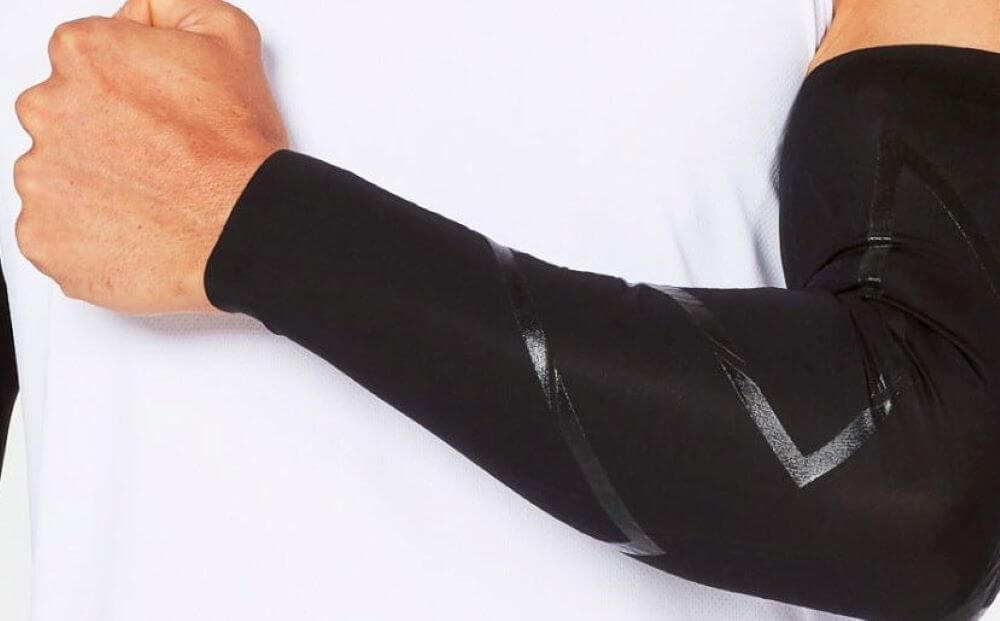Compression Sleeves: How They Work And Benefit Recovery

Left Sidebar
Compression Sleeves: How They Work And Benefit Recovery
Swimmers have always had the desire to be better in the pool. However, they are also able to improve outside the pool to complement their performance. For example, swimmers can take advantage of compression sleeves to improve their recovery.
Compression sleeves consist of nylon or a spandex blend fabric. The use of these materials produces a slight squeeze of the muscles. Research shows that compression sleeves help to increase the blood flow toward your heart and stabilize the muscles by improving oxygen delivery. Since blood flow increases, compression sleeves keep the muscles warm, rested, and loose. The compression effect also helps to remove lactic acid and limit the muscles’ swelling. For that reason, swimmers can utilize compression sleeves after participating in rigorous training sessions or following a minor injury that may have caused muscle damage. Swimmers are also starting to include them in their pre-training or pre-race routines.
Sleeves may cause unfavorable reactions that may hinder the swimmer’s recovery. If the sleeves are too tight, the blood circulation into the muscles will be restricted. On the contrary, if the sleeves are not tight enough, no compression will be produced.
The perfect length for an arm sleeve should cover the swimmer’s wrist, shoulder, and biceps. On the other hand, leg sleeves must wrap the calf and shin. It should also end about two fingers short of the knee bend. Although there is a specific measure for the sleeves’ length, each swimmer must adapt to the size chart given by the brands.
Nowadays, the only FINA approved swimming brand that has launched its original compression sleeves is Arena. These compression sleeves combine carbon technology for intelligent compression and strategic silicone taping to prevent shoulder injuries.
A Rising Trend
The company A3 Performance has come out with the newest innovation of this kind of equipment. It created BODIMAX, sleeves specifically for in-water training sessions. Once the swimmer’s muscles start to heat up, the sleeves’ sensors will activate. Then, the resulting heat is transformed into infrared energy, which improves blood circulation. Some of the benefits are the improvement in the muscles’ oxygenation and the neutralization of lactic acid buildup while training. As a result, swimmers recover quicker and do not feel as tired.
Although BODIMAX sleeves’ purposes are for in-the-water sessions, athletes can also use them during dryland and lifting sessions. These innovative sleeves allow swimmers to train longer, better, and faster by postponing and decreasing the resulting muscles’ tension.
Conclusion
Compression sleeves can have a positive impact on a swimmers’ physical and mental preparation and recovery. However, implementing these new technologies is a decision a swimmer and his/her coach must feel is beneficial for progression.
All commentaries are the opinion of the author and do not necessarily reflect the views of Swimming World Magazine nor its staff.
Subscribe
Login
0 Comments
Inline Feedbacks
View all comments



